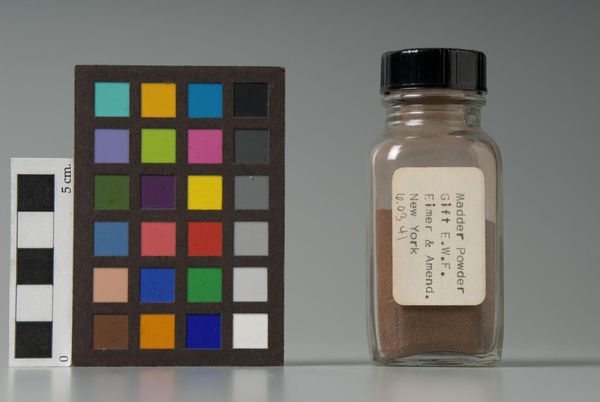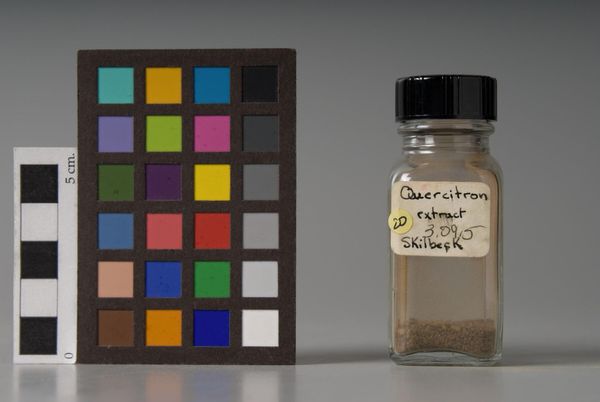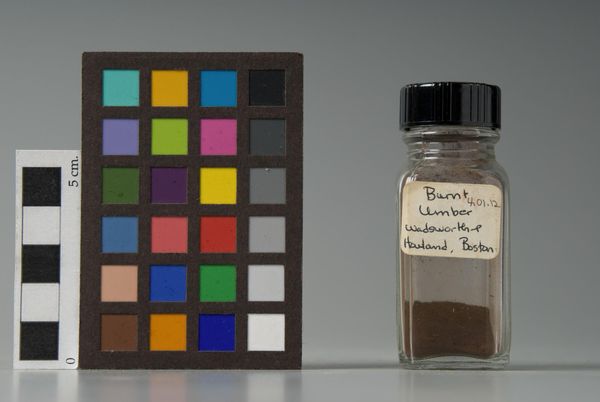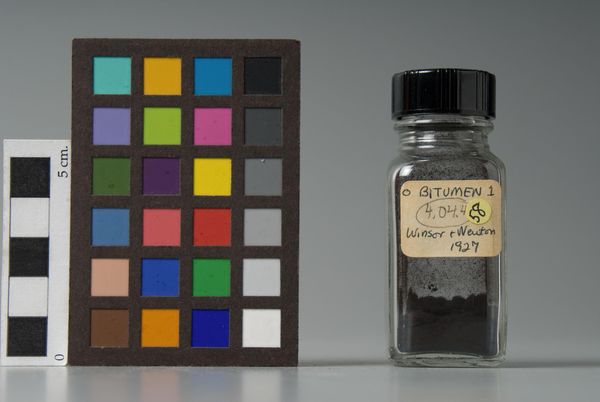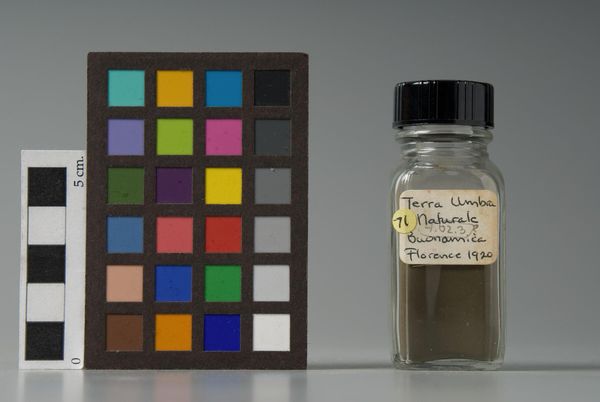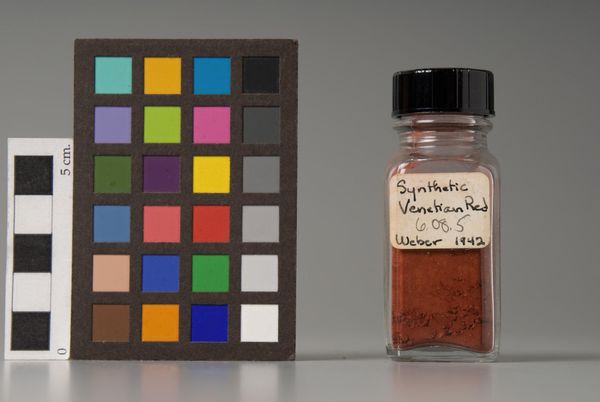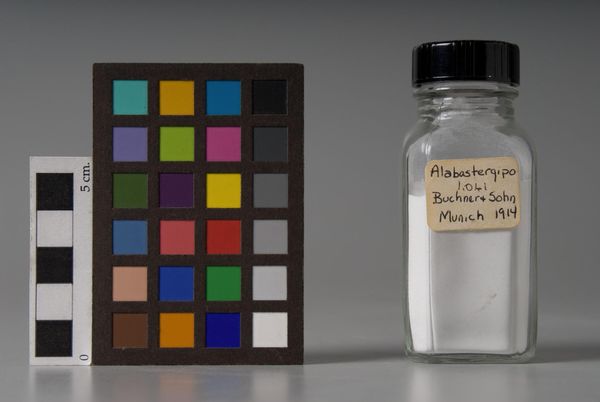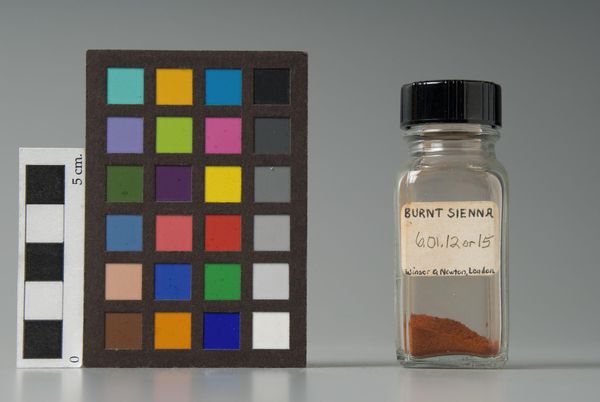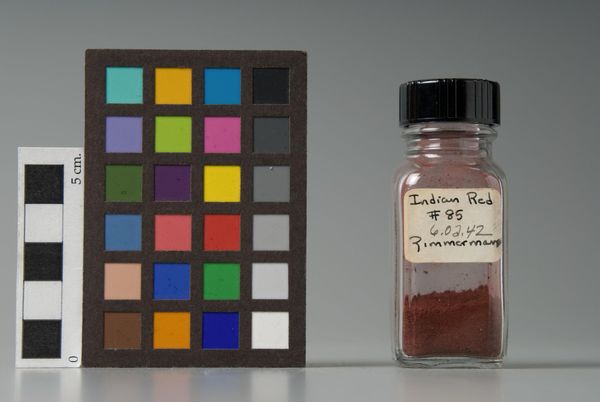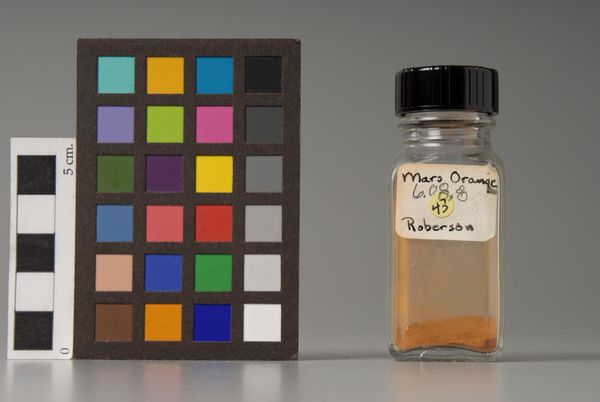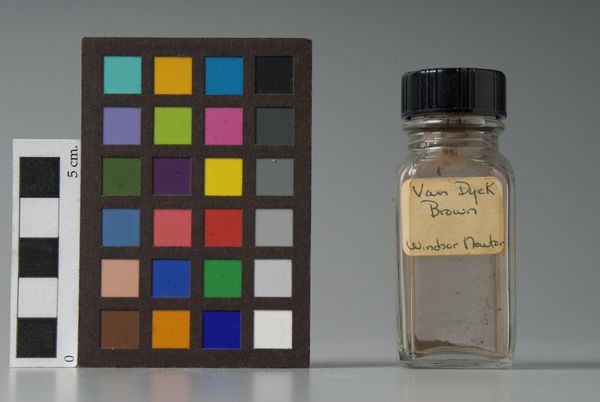
Copyright: CC0 1.0
Curator: We're looking at "Brown Umber," manufactured by Antonio Buonamici in Florence, 1920. It's literally a jar of pigment, earth itself, ready to be transformed. Editor: The jar gives it such a strange feeling... both precious and mundane, like a spice in a cupboard, but also a key to unlocking color itself. Curator: Umber, derived from the Italian word for shadow, speaks to a lineage of earth tones, often associated with humility and grounding. Its use connects artists across generations. Editor: It also speaks to the commodification of the earth. Who had access to this color, and how was the umber sourced? I can't help but think of colonial resource extraction. Curator: True. Yet, contained within this simple jar is the potential for countless images, each carrying its own cultural weight and emotional resonance. Editor: Absolutely. And I see a potential critique of the art market itself. A simple jar of pigment becomes an artifact. Curator: It's a testament to the enduring power of color, even in its rawest form. Editor: I'm struck by how much history—both artistic and social—can be contained within such a humble object.
Comments
No comments
Be the first to comment and join the conversation on the ultimate creative platform.
